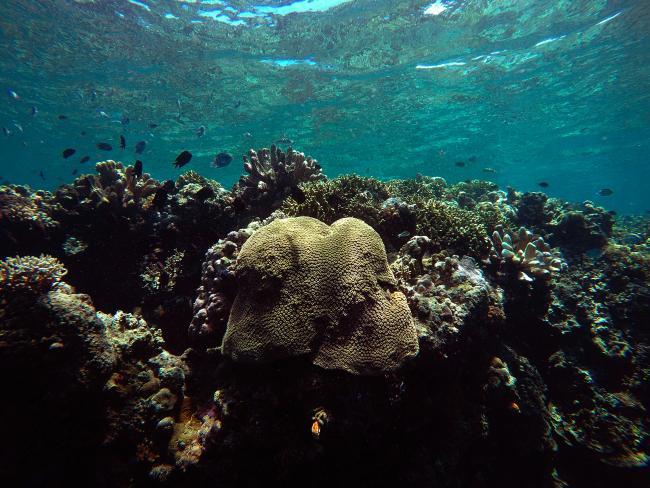Mathematical modelling of coral calcification
Corals build skeletons of calcium carbonate that, over centuries and millennia, accumulate to form reef systems. Coral reefs are the foundation of one of the most diverse and productive ecosystems on Earth. The calcification process depends on the carbonate chemistry in the ocean, which is currently perturbed by the anthropogenic emissions of carbon dioxide, causing ocean acidification (i.e. a decrease in the pH of the seawater). This long-term project aims at improving our understanding of the physiological and biogeochemical processes driving calcification in corals by integrating laboratory data with mathematical modelling.
Coral polyps actively control the precipitation of calcium carbonate. This is inferred from daily and seasonal variations of calcification rates, which produce density bands in the coral skeletons, similar to tree rings. Due to this biological control, some corals are able to calcify in waters with relatively low pH. Other coral species, however, are very sensitive to changes in ocean pH and can thus be negatively affected by ocean acidification and other co-occurring stressors. Our aim is to understand the variability in the physiological control of the calcification process in order to determine how coral communities will be affected by ocean acidification.
The active transport of ions requires energy and calcification is believed to be energetically costly. Using our mathematical models we are also able to calculate the energy requirements of calcification and relate them to other metabolic processes.
Project Partners (Germany) |
International Project Partners |
|---|---|
|
Dr. Silke Thoms (Alfred Wegener Institute, Bremerhaven) Dr. Claire Reymond (ZMT) Dr. Tim Rixen (ZMT) |
Prof. Justin Ries (Marine Science Center, Northeastern University, Nahant, USA)
|





